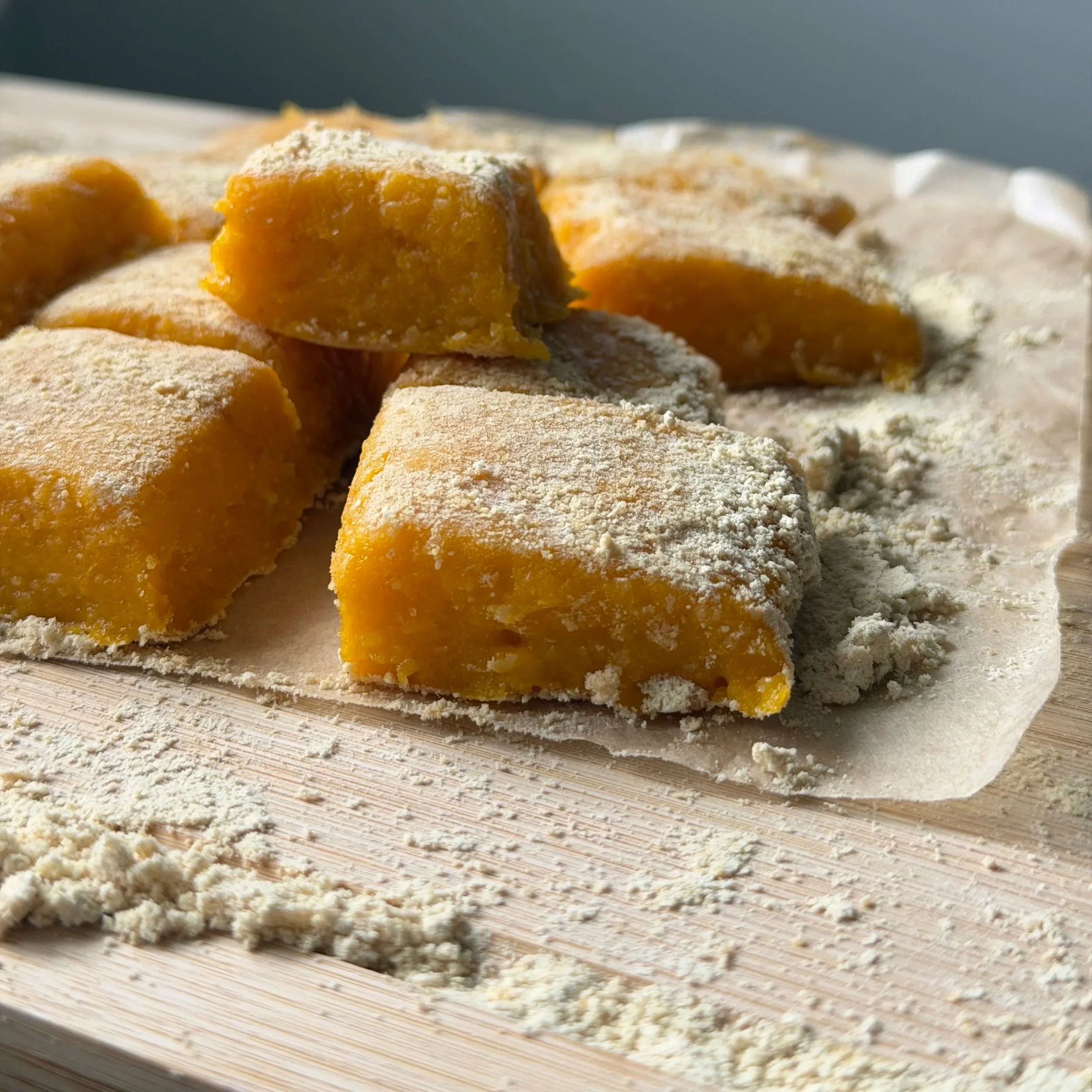Chocho Protein: The Regenerative Superfood Changing Plant-Based Nutrition
THE UP-AND-COMING PROTEIN FOOD SOURCE: CHOCHO
A Complete, Regenerative, Nutrient-Dense Superfood
If you’ve never heard of Chocho, you’re about to meet your new favorite protein source. This remarkable lupin bean is exceptionally nutrient dense, environmentally regenerative, and naturally rich in complete plant protein—something incredibly rare in the plant world.
What Makes Chocho Worth Trying?
Chocho is packed with hard-to-find nutrients:
✔️ Complete protein
✔️ Fiber
✔️ Iron
✔️ Calcium
✔️ Magnesium
✔️ Essential minerals & antioxidants
But beyond its nutritional profile, Chocho is also regenerative, meaning its cultivation actively improves the soil it grows in.
Why Chocho Is a Regenerative Crop
Most crops deplete the soil. Chocho enriches it.
As a legume, Chocho naturally pulls nitrogen into the soil, restoring nutrients for the next round of crops. Farmers report Chocho increases soil productivity for the next harvest by over 140%, creating a cycle of regeneration instead of depletion.
Regenerative agriculture supports:
Soil health
Biodiversity
Water conservation
Increased farm productivity
Climate resilience
Chocho checks all the boxes—and more.
Extraordinary Agricultural Benefits
Drought tolerant — requires no irrigation beyond rainfall
Grows without fertilizers
Protects companion crops
Supports small farmers and indigenous agricultural practices in Ecuador
This is sustainability without compromise.
Chocho: A Rare Complete Plant Protein
Very few plant proteins are “complete”—meaning they contain all 9 essential amino acids. Most require combining (like rice + beans), but Chocho stands alone.
Chocho is >54% protein by weight, the highest of any whole plant food.
Compare that to:
Soy: ~36%
Pea: ~34%
Quinoa: ~14%
As Mikuna Foods states:
“Chocho has more protein by weight than soy, pea, and quinoa combined.”
This means Chocho supports:
Muscle building
Blood sugar balance
Hormone production
Tissue repair
Gut lining integrity
Satiety & steady energy
As Kelly LeVeque shares, every cell in your body needs complete amino acids—Chocho finally brings this to the plant world.
But What Is a Complete Protein?
A complete protein contains all 9 essential amino acids—nutrients the body cannot make on its own.
Many plants contain protein but lack the full amino acid profile needed for:
Muscle synthesis
Hormone production
Neurotransmitters
Skin, nail, bone & tissue development
Chocho does it all—without the digestive discomfort many plant proteins cause.
Zero Bloat + Gut-Friendly
Unlike soy, pea, rice, or quinoa proteins—often irritating due to lectins, oxalates, and phytic acid—Chocho undergoes a gentle water + heat de-bittering process that removes antinutrients without harming the nutrients.
No additives. No chemicals.
My toddler and I (both sensitive to many plant proteins) have never experienced bloating, discomfort, or heaviness from Chocho.
The Chocho Bean’s Nutrient Density Is Truly Mind-Blowing
Chocho is naturally rich in:
Manganese
Iron
Calcium
Magnesium
Zinc
Potassium
Vitamin E
Omega fatty acids
Fun fact:
One serving of Chocho protein has as much calcium as a glass of milk.
Its nutrient density is so high that food labs initially refused to believe it was a single ingredient. It had to be analyzed in a pharmaceutical lab.
#superfoodprotein indeed.
Athletes Swear by It
Professional athletes use Chocho to improve endurance, performance, and recovery:
Mick Fanning — 3× World Surf Champion
Leticia Bufoni — 6× X Games Gold Medalist
And more…
Chocho has been a dietary staple in Ecuador for centuries—now the rest of the world is catching up.
How to Use Chocho Protein Powder
Chocho is extremely versatile. Some favorite ways to use it:
1. Shakes & Lattes
I add it daily to my Korean misugaru shake or matcha latte for balanced blood sugar and sustained energy.
(Link your misugaru recipe here.)
2. Baking & Cooking
It works beautifully in pancakes, muffins, and mochi bakes.
(Link your mochi pancake here.)
3. Enhancing Coffees & Matchas
A scoop added to your latte prevents caffeine-related blood sugar spikes and jitters.
4. Smoothies, Sauces & Sprinkles
Chocho’s flavor is mild, earthy, and delicious—no bitterness, no bean-y aftertaste.
It even reminds me of Korean misugaru (minus the allergens!).
Why I Love Chocho Protein
It’s nutritionally superior to any plant protein
It’s a complete protein (rare!)
It doesn’t cause bloating
It’s dairy free, gluten free, soy free, nut free
My toddler and I tolerate it beautifully
It’s ethically grown & regenerative
It’s incredibly clean: just crushed, soaked, and dehydrated
The Chocho Bean Oil
Over 20% of the Chocho bean is high-quality oil rich in omega fatty acids.
According to fifth-generation Ecuadorian farmer Ricky Echanique (Founder of Mikuna Foods):
“Chocho oil is second in quality only to olive oil.”
Where to Get Chocho Protein Powder
Created in partnership between Kelly LeVeque and Mikuna Foods, this is the cleanest, highest-quality Chocho protein on the market:
Use Code: MUMWITHABUN for $10 off any of the following:
✨ Make Your First Chocho Recipe: Hobak Tteok (Sweet Pumpkin Mochi Rice Cake!)
This superfood pairs beautifully with your Hobak Tteok recipe.
Add Chocho to boost protein, digestibility, and blood-sugar balance—and make your tteok even more nourishing.
👉 Make my Sweet Pumpkin Mochi (Hobak Tteok) recipe here
🎥 Watch the IG reel here
Sources
(All retained as in your original post.)
Be Well by Kelly Interview with Mikuna’s Ricky Echanique
Mikuna Foods
The Spoon Tech Feature
Junge & Reichman Podcast

